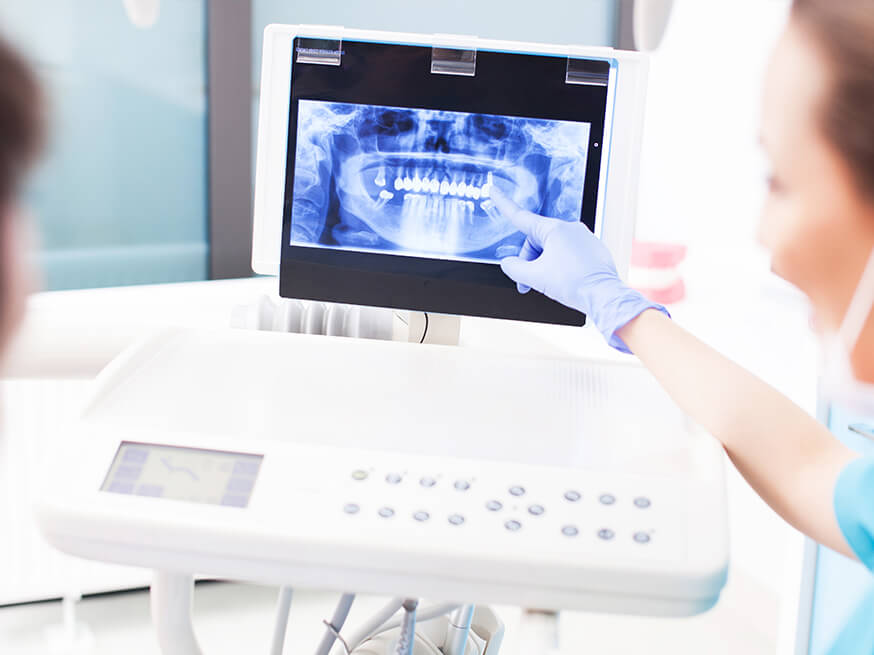Procedure
Dental implant surgery replaces missing teeth by implementing screw-like posts in the root area. The dental implant procedure is performed in different ways depending on what kind of implant you’re getting and the health of your jawbone. There are single-tooth dental implants and multiple teeth implants. Usually, when a patient is missing more than one tooth, a suitable option would be the multiple implant route. During this procedure, two fixtures are implanted and then a crown is attached. Another option is the all-on-four procedure. This method supersedes all of the teeth on the top or the bottom of your mouth with just four implants. As well, patients who need to replace an upper and/or lower set of teeth can now receive all-on-six implants. Our doctors will place six implants and then attach a full arch of teeth, giving the procedure its name.
The first step towards receiving dental implants is completing a full and exhaustive evaluation of your teeth. This includes X-rays and teeth models to ensure that the dental implants will match and fit as closely and naturally to your teeth. Be sure to tell your dentist any medical conditions you may have, any medication you’re currently taking, or any dental work you’ve had in the past. Next, during the planning process, the oral surgeon will determine how many teeth need to be replaced based on the condition of your jawbone. At this time your dentist will discuss the different types of surgical anesthesia options and which method will work best for you during your procedure. Before the date of your procedure, your dentist will give you a list of “Do’s and Don’ts” that you should follow and may even prescribe you antibiotics prior to fight infection.
It is important that you arrange for a friend or family member that can drive you to and from the appointment. Make sure to give yourself plenty of rest the day following the surgery.
Good News— We can see you as early as Thursday or Friday! Contact us now to schedule your free consultation.




